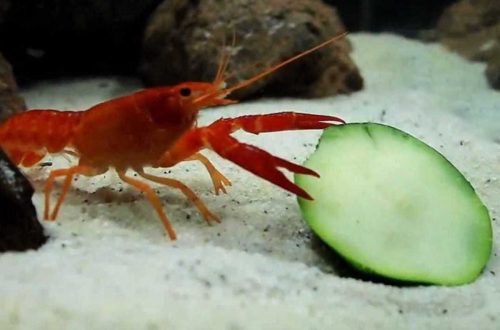
What grass can be useful to feed rabbits every day
More and more villagers and summer residents are engaged in breeding rabbits. The increased demand for rabbit meat can serve as an explanation for this. The dietary product turned out to be devoid of cholesterol and does not cause allergies. Breeding rabbits at home is not very difficult if you know the features of keeping them.
Contents
Balanced diet
In order for rabbits to quickly gain weight and produce healthy, numerous offspring, captive food must be balanced and resemble the natural diet. One rabbit eats 412 kg of grass, 107 kg of hay, 330 kg of concentrated feed and 120 kg of root crops and melons per year.
Almost half of the forage requirement comes from grass that grows in season. Therefore, it is important to know which herbs can be fed to a rodent, and which ones can overnight leave a rabbit breeder without their eared pets. Wherein grass should be as diverse as possible and only young, that is, before flowering.
All green residues from thinning plants can also be attributed to green fodder. You can not use greens from the garden after chemical or biological treatment of plants. Delicate animals can be poisoned by residual toxic substances.
Variety of herbal food
For a balanced diet from green plants, rabbits receive substances that are adapted to their digestive system. These include a complete protein with amino acids, fats, carbohydrates and enzymes that cannot otherwise enter the feed. Chlorophyll vital for stimulating the circulatory system rabbits. Therefore, summer green feeding is the most important stage in rabbit breeding.
In order to collect a sufficient amount of greenery, use:
- sowing cultivated herbs;
- leftovers and weeds from the garden;
- wild herbs.
Special seeding
In order to provide his pets with fresh and juicy greenery, the owner of the farm may have sown areas under the herbage of cereals or legumes. And the best food will be combined, although rabbits like legumes more. But it is not always necessary to indulge the whims of pets. If fed with a lot of legumes, rabbits will gain weight very quickly and may become obese. And this is harmful for the rabbits, it will be more difficult to mate and there will be fewer rabbits in the litter.
Legume grass stands are used for feeding young animals before slaughter for a rapid increase in mass. For this, lupins, vetch, peas and other legumes are sown. For food, they need to be mowed before flowering. At this time, the plant has accumulated the most useful substances. Clover and vetch sown together, oats and annual grasses will provide excellent fodder.
Garden green mass
Common garden weeds are an excellent fodder base. Quinoa, wheatgrass, thistle, thistle spurge and other similar weeds make excellent animal feed. You should not take biting or chickweed, rabbit breeders do not give this grass to their pets. It is impossible for a leaf of celandine to get into the green mass. Wormwood and nettle growing in secluded corners are also a delicacy for rabbits.
In the summer, a lot of greenery can be taken from the garden when thinning. In this case, the possibility of poisonous plants getting into the feed will be excluded. It is unlikely that the owner breeds them in the garden. But do not feed potato and tomato greens, since it contains the poisonous substance corned beef. It is necessary to add beet leaves in a dosed and very little way, as they act on the digestive system of the rabbit.
wild herbs
Wild herbs are collected in meadows and forests. In this case, you should know the varieties of plants. Usually meadow grasses do not contain poisonous plants. But it is more likely to meet them in the lowlands, in wetlands with long periods of standing water. Poisonous herbs often grow in these places. The best way is to collect only familiar plants. The green fodder should not contain leaves of celandine, buttercup, foxglove, meadow lumbago or horned cornflower. The list of poisonous plants is extensive and each region has its own varieties. That’s why need to know plantsthat should not be fed to livestock.
The result will be convulsions, diarrhea, paralysis, impaired cardiac activity, bloating. Different herbs act differently, but an experienced specialist will understand what the rabbit was poisoned by. The same herbs in the hay will no longer be poisonous, since in the process of drying in the sun, many poisons decompose or their action becomes below the poisoning threshold.
How to feed greens?
In early spring, when they begin to transfer rabbits to summer food, greens begin to be added gradually. For the first time, feeding with nettles is done at the rate of 50 grams of green mass per rabbit. Moreover, finely cut nettles are brewed and crushed potatoes or bran are added to it. During summer maintenance, the following rules should be observed:
- observe the norms of feeding green mass;
- specially prepared herb:
- requirements for mass harvesting sites.
Green mass feeding norms
The norm of grass for rabbits is increased every day, and after two weeks, an adult nursing uterus receives up to one and a half, females up to a kilogram, and young animals 600 grams of grass per day. This is more than half of the daily consumption of all feeds.
You need to know that hay in the feeders should always be present. It can be replaced by young shoots of trees. Roughage is needed to grind down growing incisors. It is unacceptable to feed grass with mold or rot.
grass requirement
Do not feed animals with heated fresh grass or wet from rain or dew. With green feeding, it will be right to give grass to rabbits that has lost its tugor under the sun’s rays. Wherein grass for rabbits must be clean, washed if necessary. This herb has already lost some of its moisture and has a beneficial effect on digestion.
You can not mow grass on the sides of roads. Even washed, she has already taken harmful substances and feeding the poisonous mass can lead to illness and death of rabbits. If lethargy occurs in pets, one way to help them feel better is to add chamomile or oak leaves to their food.
The mass used for green fodder should be prepared only from young grass. After flowering, all plants coarsen. That’s why the owner of the farm should take care of the second half of the summerwhen the plants are already blooming or ripening without exception. The best way would be to sow green manure on land freed from early greenery. Plants such as phacelia, mustard, vetch will quickly give a young green mass.
Greens of the second half of summer
The use of tops from harvested root crops will be a significant addition to the feed. At the same time, you should know that tops of carrots will become a favorite delicacy and cabbage leaves. If some heads of early cabbage went to the arrow, the rabbits will have the best food. Therefore, all garden greens after washing from the ground can be used when feeding rabbits. Waste is used both in pure form and in the composition of the mash.
For quick weight gain, young animals need to be given the following plants as part of forbs more often:
- meadow rank;
- blooming Sally;
- nettle;
- tansy;
- clover;
- bottom
The more varied the green diet, the better the rabbits will feel.
Use of leaves and twigs of trees
In the preparation of roughage for rabbits for winter keeping, a large place is occupied by branch forage prepared from young shoots of trees in the form of brooms. Branches replace up to 20% of the weight of hay and straw harvested for the winter.
No less important is the use of green branches during summer feeding. In addition to soft juicy grass, for the work of the gastrointestinal apparatus of the rabbit ballast substances are needed, which will become young wood. At the same time, cutters are sharpened on the rods, which grind the green mass better.
Rough herbage subsequently goes to the harvesting of hay and hay dust, without which it is impossible to do in the winter season.





